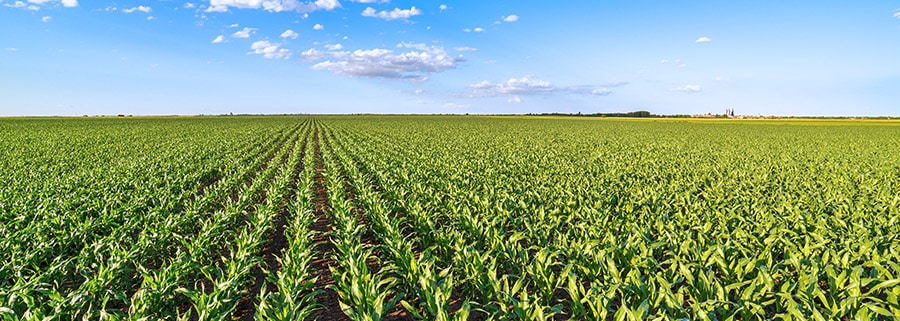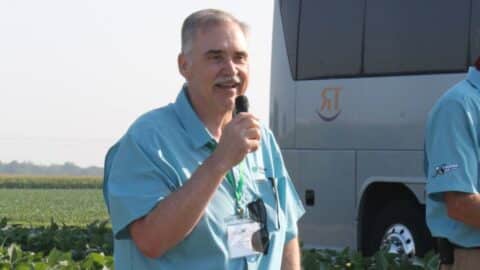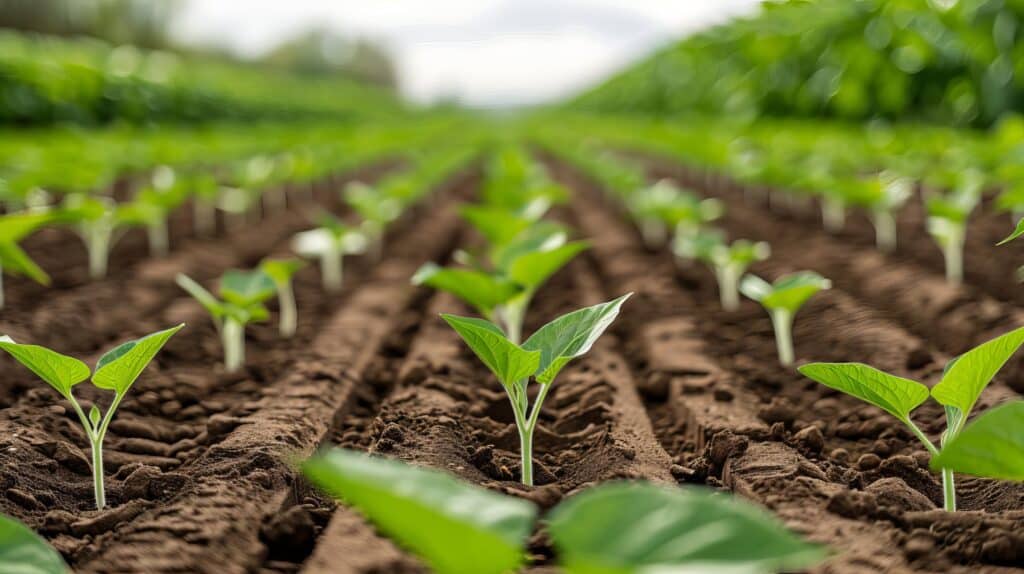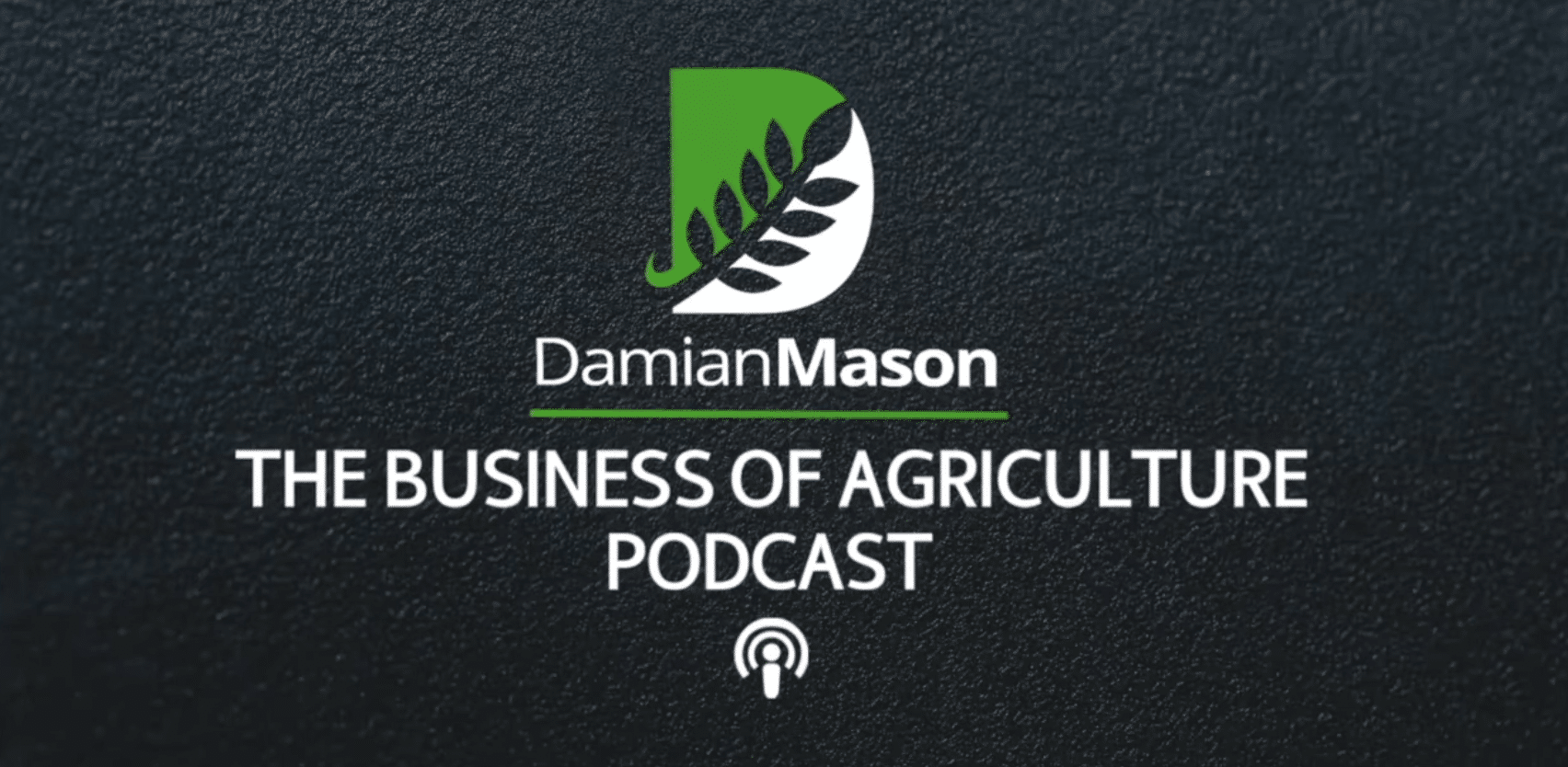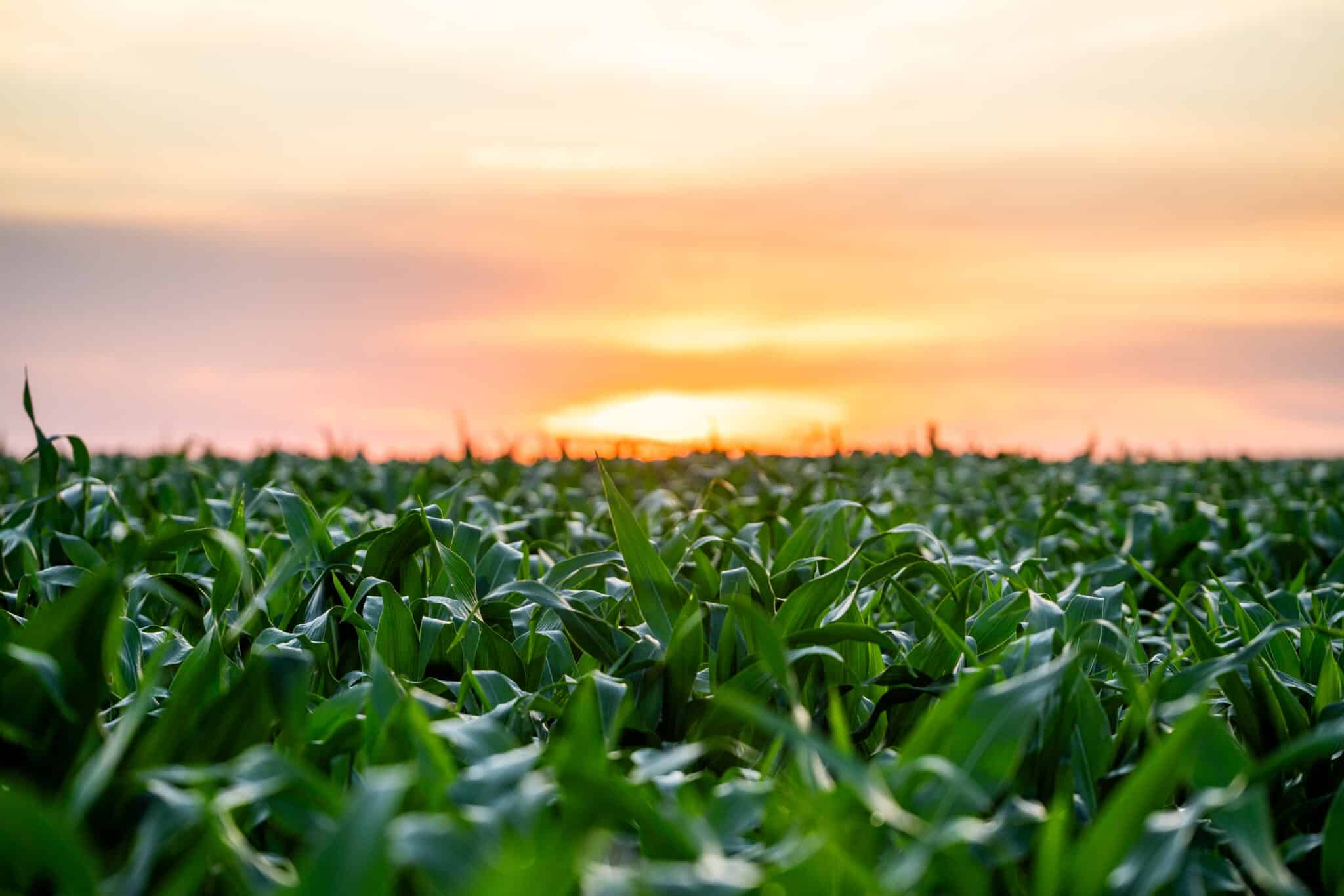Improve crop performance by reviewing seed emergence, soil health, and seed treatment methods after planting
Planting season may be in the rearview mirror, but the next phase is already underway. This is the moment to look at what’s happening in your fields and ask the right questions. Early signs like seed emergence, vigor, and stand uniformity are helpful to assess, as they’re the first indicators of how your management decisions are playing out in real time.
The most successful growers know that these post-planting weeks are critical for shaping what comes next. Because right now, you can still connect the dots between this year’s early performance and next season’s input strategy. It’s the best window you’ll get to evaluate seed treatment methods, soil conditions, and crop response with clarity and context.
Growers need solutions that drive efficiency on their farms, from equipment to crop inputs. These solutions need to support stronger stands, healthier soils, and smarter seed treatment decisions that lead to better yield and stronger ROI. The six questions ahead are designed to help you reflect and translate field observations into stronger decisions for next year. Let’s take a closer look at where things stand and where they can go.
1. Is seedling emergence happening quickly enough?
The first few days after planting tell you more than any spreadsheet or yield map. If seedlings were slow to break the surface this spring, it’s time to figure out why. Even a 12-hour delay in emergence can start chipping away at your yield potential. And when those delays stretch into days, the damage compounds, especially in corn and soybeans. The most common culprit is cold soil, because when temperatures dip below optimal germination thresholds (<55°F), seed metabolism slows and opens the door for pathogens like Pythium and Fusarium to move in. Add in poor seed-to-soil contact, crusting, or uneven moisture, and you’ve got a recipe for inconsistent growth and early stand loss.
This is exactly where a stronger seed treatment method can pay off. Products like Tidal Grow® GENMAX® are designed to give seeds a head start by defending against early-season threats and stimulating seed emergence through a biological mode of action. It’s especially valuable in fields with a history of Pythium in corn, Fusarium pressure, or where cold soil treatment is a recurring issue.
If emergence was uneven or delayed across zones, make a note now. That data will help you adjust hybrids, soil prep, and seed treatment methods in time for next season. And if your current seed treatment program didn’t hold up under pressure, this is your chance to find something that will.
2. Is seed emergence uniform across the field?
Uniform seed emergence is one of the clearest signs that early-season conditions were in your favor. A consistent stand gives every plant equal access to sunlight, water, and nutrients, setting the stage for healthy development and better yield potential. If some seedlings were slower to emerge or visibly behind in growth, that may already be affecting plant performance in ways that will show up at harvest.
Smaller, late-emerging plants often lose the race for light and space. Over time, this creates uneven competition across the canopy, reducing efficiency and limiting potential across the whole field. According to data from Iowa State University, non-uniform stands have been shown to cause yield reductions of up to 23 percent. That kind of gap isn’t always obvious in the early vegetative stages, but it tends to show up clearly through flowering or tasseling if not addressed.
Now is the time to look closely and take notes. Are you seeing pockets of weaker growth? Are there zones where plants are shorter or visibly behind? If so, you may be dealing with issues tied to variable moisture, inconsistent seedbed conditions, or early disease pressure from soilborne pathogens. These problems can be anticipated and managed ahead of next season. To reduce variability in the future, Tidal Grow® AgriScience seed treatment solutions are developed to support more uniform emergence under early-season stress. These treatments are designed to protect seedlings during the most vulnerable stages and promote a more even stand across changing field conditions. Taking note of where inconsistencies appeared after this planting season can guide adjustments to both seed treatment selection and field preparation for stronger, more consistent results next year.
3. Are you seeing the vigor you expected?
Vigor is one of the clearest signs of how well early decisions are translating to in-field results. Strong plants in the early stages of development usually signal that nutrients are being accessed, stress is being managed, and the seed treatment is doing its job. When seedlings have thick stems, a dark green color, and steady growth, they’re more likely to handle variability in temperature and moisture. If you’re noticing pale leaves, delayed growth, or patchy weak zones, those observations should be logged while they’re still visible.
Early vigor is shaped by many factors:
- Soil conditions
- Seed genetics
- Weather patterns
- Nutrient availability
- Seed treatment
Seed treatment often determines how well a plant can respond to these challenges. When biological compounds are used to prime the seed, the plant has a better chance of establishing roots quickly and beginning photosynthesis efficiently. In crops like corn and soybeans, that head start can impact stand strength and yield trajectory throughout the season.
Take time to walk the field and compare zones. Are your stands even in height and color? Are plants showing signs of energy and healthy leaf development? If there are clear differences, those discrepancies may be tied to seedbed inconsistency or how well your current seed treatment method supports seed emergence under stress. Tidal Grow® GENBOOST is formulated to improve seedling vigor by enhancing early-stage energy and growth. Its biologically active compounds work at the root level to support stronger establishment and more uniform development. This gives young crops a better foundation to manage environmental pressure, maintain stand integrity, and perform more consistently throughout the growing season.
4. Did you encounter early pests or pathogens?
Not all seed emergence issues are tied to soil or seedbed conditions. If certain areas of the field struggled with poor stands, uneven growth, or early plant death, there’s a good chance pests or pathogens played a role. Root diseases like Pythium, Fusarium, and Rhizoctonia tend to be most aggressive in the first few weeks after planting. Infected seedlings often show signs of stress before they break the surface—or fail to emerge altogether.
Cool, wet conditions amplify the problem. That’s when seeds are most vulnerable and when harmful fungi and bacteria are most likely to thrive. Nematodes are another concern, especially in high-pressure zones that have shown problems year after year; they weaken roots early, leaving plants with less capacity to take in nutrients or defend against other threats. Even a few missed pockets can disrupt the uniformity and potential of the stand.
This is the right time to review field maps, emergence photos, and field notes while the season is still fresh. If you experienced early loss and your current seed treatment didn’t seem to hold up, those observations will be valuable when it comes time to adjust next year’s program. Fields with recurring pressure often benefit from a seed treatment approach that targets both disease and stress. One option to explore is a chitosan-based seed treatment, which supports plant resilience by activating the crop’s natural defense systems. These treatments help create a less favorable environment for pathogens, reducing the likelihood of infection during the vulnerable germination window. They also complement existing programs without adding unnecessary complexity. In fields with a history of early disease pressure, this kind of approach can support healthier stands and stronger crop performance throughout the season.
5. Did soil temperature affect planting performance?
Soil temperature plays a critical role in early crop success. If your planting was delayed this spring or if you noticed uneven stands despite favorable moisture, it’s worth asking whether cold soil slowed your seed emergence. A colder-than-ideal seedbed can reduce germination speed and vigor or create an opportunity for early pathogens to interfere before plants are fully established. This is where a cold soil treatment strategy becomes part of a longer-term conversation about crop resilience.
One of the most effective ways to address this issue is by implementing a post-harvest residue management strategy. When microbial activity is strong, it helps improve soil structure, nutrient cycling, and temperature regulation in early spring. These biological benefits can shorten the wait for planting-ready conditions. Research shows that growers who manage residue and invest in soil health can plant up to three days earlier the following season, gaining both time and return. That head start can lead to an additional $14 to $41 per acre, depending on conditions and crop type.
If cold soils delayed your planting window this year, take note of where it happened and how it affected performance. Supporting earlier seed emergence through post-harvest soil health improvements is a realistic, proven way to reduce planting risk. Improving biological activity now will help build a better environment for the crop that’s coming next.
6. Was last year’s residue a factor this spring?
If your stands were uneven this season, or if planting was delayed in some areas despite being ready in others, last year’s crop residue may be worth a closer look. Surface residue that hasn’t been broken down can interfere with planting in multiple ways. It can block seed-to-soil contact, slow down warming, and tie up nitrogen in high carbon-to-nitrogen scenarios, especially in corn and wheat fields. These residue-heavy zones tend to stay wetter and cooler, which can slow seed emergence and reduce stand consistency across the field.
Residue also sets the tone for early disease risk. Soilborne pathogens thrive in cool, saturated environments and are more likely to infect seedlings in fields with unmanaged residue, which can reduce emergence and vigor before symptoms even appear. Research indicates that higher residue coverage can lead to lower soil temperatures, impacting early crop development.
Implementing better residue management is a proactive way to improve planting performance. Practices that support decomposition, like tillage (where appropriate), targeted nutrient applications, or incorporating regenerative soil practices can help build a more responsive soil profile. Combined with effective crop scouting, these strategies can highlight high-risk zones and support more uniform field performance next season.
A strategic seed treatment plan can also play a role in these conditions. Integrating biological seed treatment options may support healthier stands by strengthening plant defenses and improving root-zone conditions. In residue-heavy fields, corn seed treatment, wheat seed treatment, and products designed for disease suppression can make a measurable difference in early crop health and ROI.
Small adjustments will make a big difference next year
Evaluating early-season performance is one of the most valuable steps a grower can take right now. Decisions made early in the season are already shaping outcomes for this year’s crop, and they offer clear insight into how to improve next season’s strategy.
Signals to study:
- Emergence speed
- Uniformity
- Early vigor
- Pest and disease pressure
- Soil temperature
- Residue breakdown
Looking at these factors side by side can reveal where small adjustments may lead to stronger stands, better protection, and higher return on investment.
We’re here to help you grow every season
Every season comes with challenges, but each one also offers a chance to learn, adapt, and optimize. As you review the stand in front of you, consider how this year’s performance can inform your next plan for corn seed treatment, soybean seed treatment, or broader biological seed treatment integration. The work you do now—evaluating what’s in the ground, recording the pressure points, and refining your approach—is what sets the stage for a more efficient, profitable season ahead.
At Tidal Grow AgriScience, we work with growers to strengthen every stage of crop development, from seed to harvest. Our seed treatment solutions are designed to support early success in tough conditions, defend against pathogens like Pythium, Fusarium, root rot, and nematodes, and enhance the soil biology that drives uniform seed emergence. When combined with a strong crop scouting program and targeted input strategy, these solutions help turn field-level observations into long-term gains.
We’re here to help you meet today’s challenges and prepare for the future with solutions designed to perform. Our precision technologies are built to improve yield, maximize ROI, and support soil and crop health. Let’s grow.
Citations
Abendroth, L., & Elmore, R. (2006, June 12). What’s the yield effect of uneven corn heights? Iowa State University Extension and Outreach. https://crops.extension.iastate.edu/encyclopedia/whats-yield-effect-uneven-corn-heights
Elmore, R., Specht, J., Brhel, J., Yang, H., & Grassini, P. (2018, April 12). Cold soil temperature and corn planting windows. University of Nebraska–Lincoln, Institute of Agriculture and Natural Resources, CropWatch. https://cropwatch.unl.edu/2018/cold-soil-temperature-and-corn-planting-windows
Robertson, A. (2025, April 14). Scouting tips for seedling disease. Iowa State University Extension and Outreach. https://crops.extension.iastate.edu/post/scouting-tips-seedling-disease
Tipton, L. (2025, May 26). The Plan After the Planter: Six Questions to Ask Now to Set Up Next Season. SeedWorld. https://www.seedworld.com/us/2025/05/26/the-plan-after-the-planter-six-questions-to-ask-now-to-set-up-next-season/
